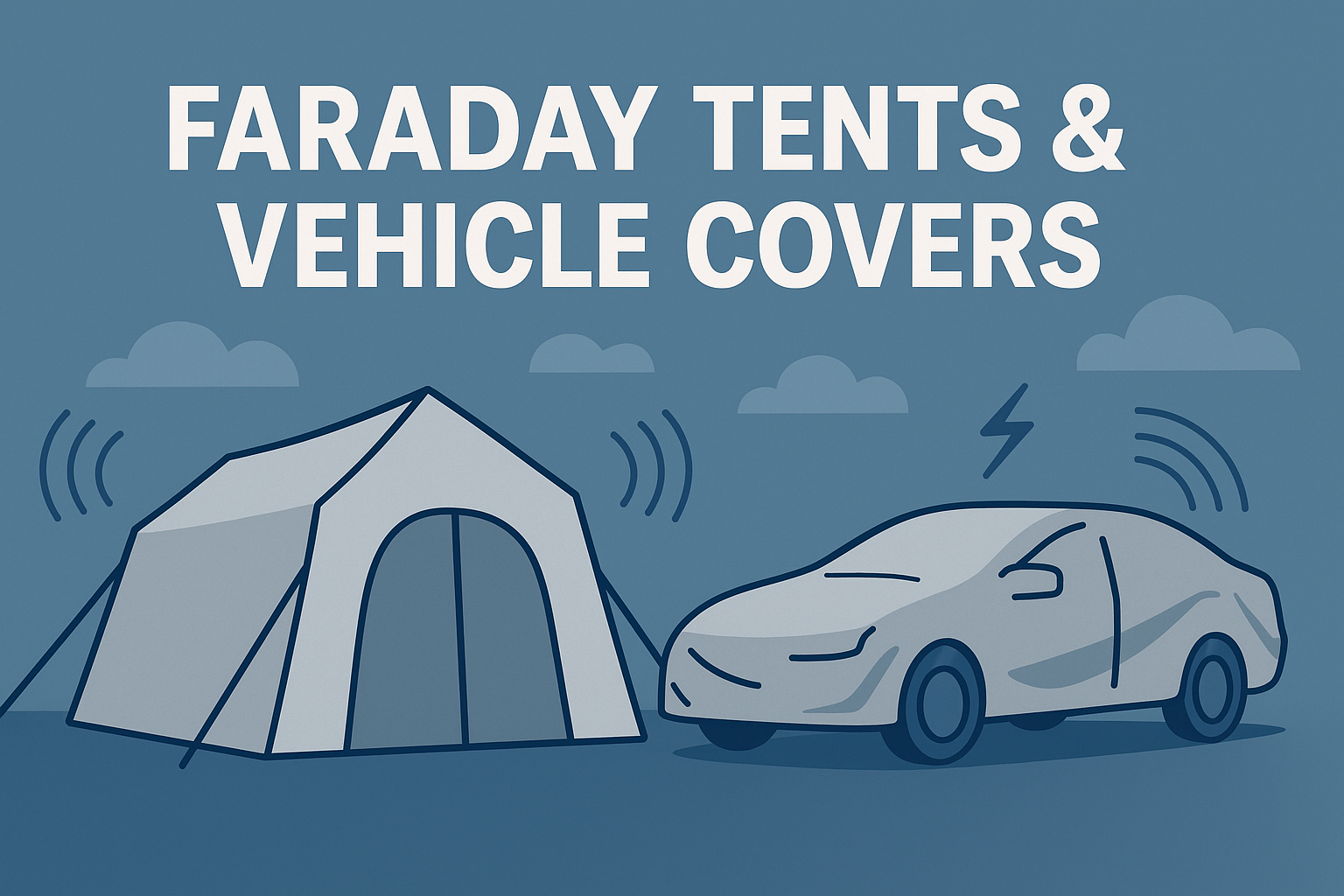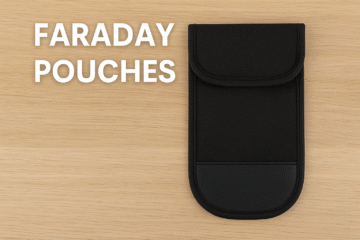Tested and Compared by Type and Application
Wireless technology powers modern life — but it also surrounds us with invisible electromagnetic waves. From Wi-Fi routers to smart meters, 5G towers, and even household wiring, our homes constantly interact with a range of frequencies.
That’s where frequency blocking materials come in. These fabrics, paints, foils, and films are designed to reduce exposure to radio frequencies (RF), electromagnetic fields (EMFs), and other signals by reflecting or absorbing them.
This guide breaks down the top 10 frequency blocking materials consumers can buy online, explains how they’re tested, and shows which ones perform best for specific home applications.
🧭 Quick Comparison: Top 10 Frequency Blocking Materials
| # | Material Type | Example Product | Typical Attenuation (dB) | Frequency Range | Approx. Price | Best For |
|---|---|---|---|---|---|---|
| 1 | Silver EMF Shielding Fabric | SilverAffect Silver Jersey Fabric | 40–50 dB | 30 MHz–10 GHz | $55/yard | Curtains, bedding, DIY projects |
| 2 | Carbon-based Conductive Paint | MG Chemicals 841WB Paint | 45–55 dB | 10 MHz–2 GHz | $44/bottle | Small wall sections or electronics |
| 3 | Graphite-Rich Wall Paint | YShield HSF54 Paint | Up to 67 dB | 30 MHz–18 GHz | $230/5L | Full-room coverage |
| 4 | Copper Mesh Fabric | Aaronia Copper Shield Mesh | 60–100 dB | 100 kHz–40 GHz | $80/meter | Walls, floors, DIY Faraday cages |
| 5 | Nickel/Copper Film | Aaronia Magnetic Foil Tape | 55–75 dB | 1 MHz–10 GHz | $35/roll | Grounding, seams, or cable shielding |
| 6 | EMF Shielding Bed Canopy Fabric | Redemption Shield Breathable Fabric | 35–45 dB | 30 MHz–6 GHz | $42/meter | Sleeping areas |
| 7 | Silver-Thread Scarf (Wearable) | Radia Smart EMF Scarf | 25–35 dB | 800 MHz–6 GHz | $75 | Personal protection |
| 8 | Aluminum Foil Tape | 3M Aluminum Shield Tape | 40–60 dB | 10 MHz–3 GHz | $20/roll | Gaps, seams, grounding |
| 9 | Transparent Window Film | Signals Defense RF Window Film | 20–30 dB | 800 MHz–40 GHz | $120/roll | Windows and glass doors |
| 10 | Grounding Mesh (Stainless Steel) | Swiss Shield Steel Ground Mesh | 50–70 dB | 100 kHz–6 GHz | $60/m² | Under flooring, walls |
🧵 1. Silver EMF Shielding Fabric
Why it’s effective: Silver is an exceptional conductor, capable of reflecting and absorbing a wide range of frequencies. Silver-lined fabrics are lightweight, breathable, and ideal for home projects like curtains, bed canopies, or clothing.
Example: SilverAffect Silver Jersey Fabric – $55/yard
- Blocks up to 50 dB (99.999% reduction) across 30 MHz–10 GHz
- Comfortable and washable
Best for: Bedrooms, DIY curtains, bedding, or wearable accessories
🖼️ Image prompt: Close-up photo of silver-lined shielding fabric draped across a bed canopy, showing its smooth metallic texture.
🎨 2. Carbon-Based Conductive Paint
Why it’s effective: Conductive paints use carbon or nickel particles to create a barrier that absorbs electromagnetic energy. Once applied and grounded, they can reduce both RF and electric field exposure.
Example: MG Chemicals 841WB Paint – $44
- ~50 dB attenuation
- Ideal for small surface areas or behind wall art
- Easy water-based cleanup
🖼️ Image prompt: Photo of a painter applying black conductive paint to a wall; one side finished, one uncoated.
🏠 3. Graphite-Rich Wall Paint
Why it’s effective: High-performance carbon paints, like YShield HSF54, are the go-to choice for home shielding. Once grounded, they turn walls into RF-blocking barriers that can reduce exposure from nearby towers or routers.
Example: YShield HSF54 Paint – $230/5L
- Attenuation up to 67 dB
- Water-based, low-VOC
- Used in entire-room or apartment installations
🖼️ Image prompt: Room photo showing a freshly painted black wall labeled as “Frequency Shielded Surface.”
🧩 4. Copper Mesh Fabric
Why it’s effective: Copper provides superb conductivity across both low and high frequencies. Meshes are flexible, easy to cut, and work for both architectural shielding and DIY projects.
Example: Aaronia Copper Shield Mesh – $80/meter
- 60–100 dB attenuation
- Usable for walls, under floors, or wrapped around electronics
🖼️ Image prompt: Close-up photo of copper mesh attached to a wooden wall frame or used under drywall.
✂️ 5. Nickel/Copper Foil Tape
Why it’s effective: These foils combine reflective and magnetic properties, offering solid blocking performance at a fraction of the cost. Often used for grounding or closing seams in shielding projects.
Example: Aaronia Magnetic Foil Tape – $35/roll
- Up to 75 dB attenuation
- Great for joining edges or electrical bonding
🖼️ Image prompt: Macro photo of shiny foil tape being applied to a wall corner or electrical box seam.
🛏️ 6. EMF Shielding Bed Canopy Fabric
Why it’s effective: Bed canopies create low-exposure “sleep zones.” Breathable fabrics allow airflow while deflecting Wi-Fi and cellular frequencies.
Example: Redemption Shield Breathable Fabric – $42/meter
- 35–45 dB attenuation
- Soft, semi-transparent weave
- Silver-coated polyester
🖼️ Image prompt: A cozy bedroom with a transparent silver-gray canopy surrounding a bed.
🧣 7. Silver-Thread Scarf (Wearable)
Why it’s effective: Lightweight and portable, these scarves or shawls provide personal frequency blocking, especially in dense urban areas or during travel.
Example: Radia Smart EMF Protection Scarf – $75
- 25–35 dB attenuation
- Breathable, organic cotton and silver blend
🖼️ Image prompt: Person wearing a silver-lined scarf while sitting near a laptop, illustrating wearable shielding.
🧱 8. Aluminum Foil Tape
Why it’s effective: A classic and affordable option for grounding or sealing seams in shielding installations. Aluminum reflects radio frequencies effectively and is used for both DIY and professional EMF reduction.
Example: 3M Aluminum Shield Tape – $20/roll
- 40–60 dB attenuation
- Excellent adhesive backing
- Works with conductive paints and meshes
🖼️ Image prompt: DIYer applying metallic tape along baseboards or around an outlet box.
🪟 9. Transparent RF Window Film
Why it’s effective: Windows are one of the biggest weak points for EMF entry. Conductive window films maintain visibility while providing measurable signal attenuation.
Example: Signals Defense RF Window Film – $120/roll
- 20–30 dB attenuation
- Blocks 3G, 4G, 5G, and Wi-Fi frequencies
- UV protection included
🖼️ Image prompt: Sunlit window with a semi-transparent film being applied using a squeegee.
⚡ 10. Grounding Mesh (Stainless Steel)
Why it’s effective: Stainless-steel meshes are highly durable and act as both an RF and electric field shield when installed under floors or behind drywall.
Example: Swiss Shield Ground Mesh – $60/m²
- 50–70 dB attenuation
- Used under flooring or walls
- Essential for grounding large shielded zones
🖼️ Image prompt: Photo of stainless mesh laid beneath hardwood flooring, partially visible during renovation.
💡 How to Choose the Right Frequency Blocking Material
Selecting the right material depends on your environment, exposure sources, and goals.
For sleeping areas:
- Choose soft silver or copper-blend fabrics (curtains, canopies).
- Aim for ≥35 dB attenuation for noticeable improvement.
For walls and ceilings:
- Use conductive paints or copper meshes grounded properly.
- Apply at least two coats of paint for consistent coverage.
For windows:
- Apply transparent RF films rated above 20 dB.
For DIY setups:
- Combine foil tape and fabric panels to reduce gaps and leaks.
For personal use:
- Wear silver-thread scarves or use frequency-blocking phone pouches for on-the-go shielding.
🔍 Understanding the Numbers: dB and Frequency Range
A quick rule of thumb: every 10 dB increase equals a tenfold improvement in signal reduction.
- 10 dB ≈ 90% reduction
- 20 dB ≈ 99% reduction
- 40 dB ≈ 99.99% reduction
Look for materials that publish tested dB performance and frequency ranges. Many reputable manufacturers, such as DefenderShield, Aaronia, and WOREMOR, publish lab results based on ASTM or IEEE standards.
🏁 Final Thoughts
Frequency blocking materials allow everyday consumers to take a proactive approach to reducing exposure from Wi-Fi, 5G, and household EMFs. With more products being independently tested and certified, it’s easier than ever to create healthier, lower-exposure spaces — without sacrificing connectivity or comfort.
When choosing, remember:
- Look for verified attenuation in dB and a clear frequency range.
- Combine materials thoughtfully — fabric, paint, and tape together create stronger results.
- Proper grounding and coverage matter just as much as the material itself.
By understanding how these materials perform and where they work best, you can confidently select the right products for your home, peace of mind, and long-term well-being.

